Have you heard of Furoshiki(風呂敷)? Have you ever used one? Furoshiki is a thin cloth which is shaped close to a square for wrapping, carrying or decorating something. Furoshiki is often thought of as an old traditional thing by Japanese people nowadays. However, It’s wonderful and enjoyable because one furoshiki can change its form depending on your creative ideas. Furoshiki, which have a sensitive color in Japanese design, are very attractive. Today, I’ll tell you about their history and a modern way to utilize them.
History
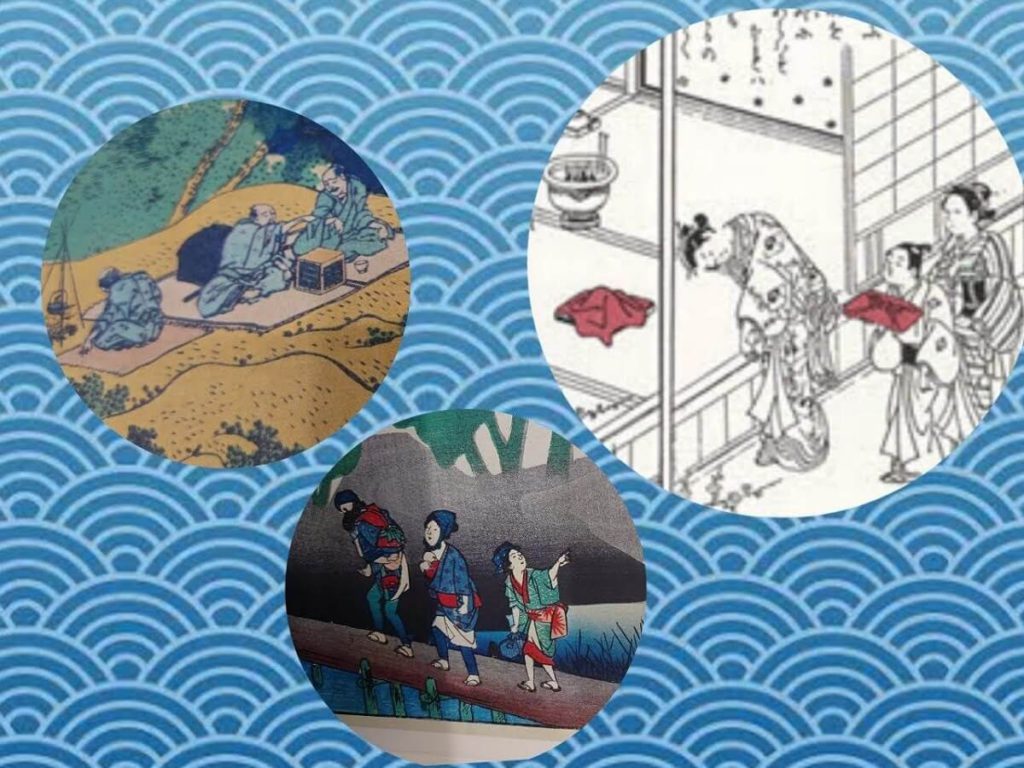
Why is it called “furoshiki”? Furo literally means “a bath” or “bath tub”. It seems that people used them in a bath as the name suggests. In the Muromachi period, from 1336 to 1573, it is said that before people go into a bath like a sauna, a family wrapped their clothes taken off with cloth to distinguish their own ones from others. And it seems that they used to get dressed on the cloth after taking a bath. Furoshiki is exactly “a cloth for putting down in the bath”.
In the Edo period, Sento, which is a public bath filled with hot water, became popular. People brought a cloth to wrap their own clothes and bathing tools with. It was used to lay on the floor in the bath, so the cloth came to be called furoshiki tsutsumi or furoshiki which literally means furo – bath, and shiki – to lay. It spread with the development of public baths at the same time.
Size

Furoshiki are not square, the basic size is about 34cm×37cm, called Hitohaba(1幅). And there are 10 sizes. Having these 10 sizes is very useful to wrap what you want to wrap. Among them, Futahaba(二幅) or Mihaba(三幅) size of furoshiki is generally useful to wrap and to use. And when you use it as a shopping bag, Nishihaba(二四幅) and Mihaba(三幅) are the best. You can choose the size depending on your needs .
Color

Furoshiki come in various colors. Since ancient times, people who wrap a gift with furoshiki have expressed happiness and sadness with the color. Warm colored ones, red and yellow, have been used on celebratory occasions, marriages and births, etc. Cool colored ones, blue and purple, have been used at funerals. People have used colors as the situation demands.
Even with a little knowledge of color, your taste in selecting furoshiki would change dramatically.
Design
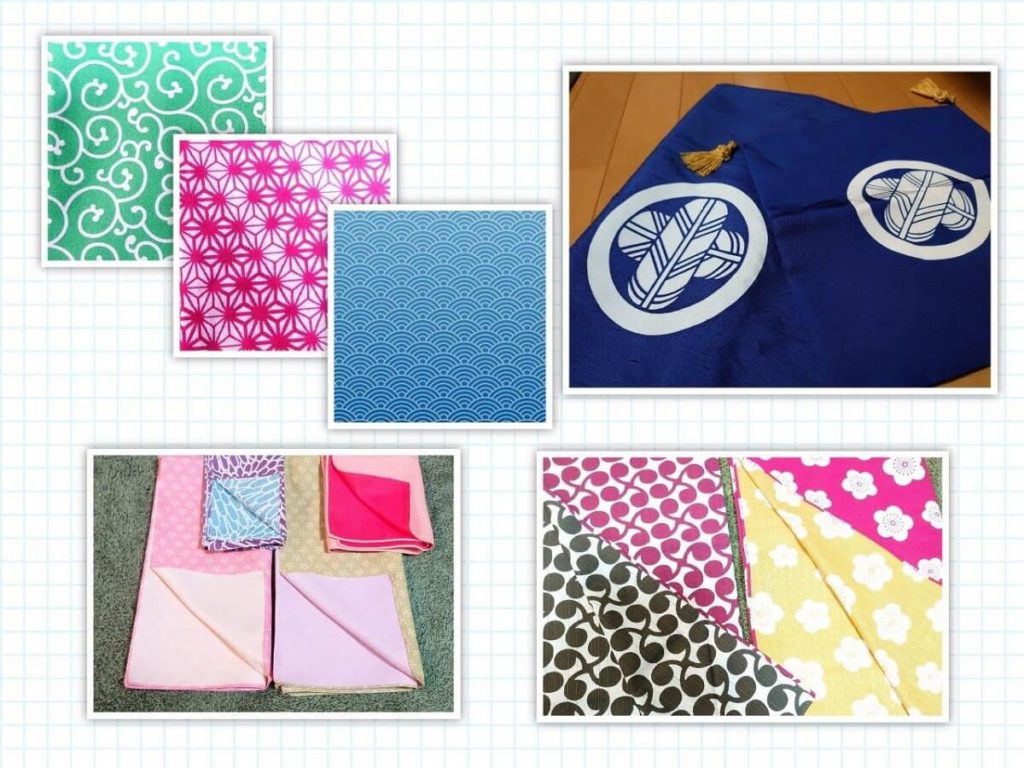
There are many patterns used in furoshiki, using Kamon (家紋), which is a family crest. There are over 3000 Japanese family crests, and on Kissyoumonyou (吉祥文様), good luck animals, plants and other designs are drawn. Many other designs are drawn for the four seasons and various seasonal, cultural, and traditional events.
Typical kissyoumonyou

Karakusa pattern
Vine plants are symbols of longevity and prosperity of offspring due to their strong life force, and are considered auspicious.

Asanoha pattern
Hemp leaves grow as fast as 4 meters in 4 months straight and are strong, so the hemp leaf pattern is associated with the wish for the healthy growth of the child. The hemp leaf pattern also has the meaning of repelling evil spirits, and has been widely used as a pattern for maternity clothes since ancient times.

Seigaiha pattern
The pattern of endless waves is filled with wishes for eternal happiness and a peaceful life for people.
Tip about Karakusa pattern (one of a Kissyoumonyou)

When Japanese people imagine a thief, the image that comes to mind is that of a thief wearing a dusty headdress and sneaking around with stolen goods in a karakusa patterned furoshiki wrapping. Why do people imagine that? Did a thief actually have that kind of furoshiki?
Vine plants are symbols of longevity and prosperity of offspring due to their strong life force, and are considered auspicious. Furoshiki with karakusa patterns were used to wrap wedding gifts at weddings, and during the Meiji period (1868-1912), that furoshiki became very popular, and every house had one, so it was a standard item to put in the bottom of the wardrobe.
Thieves would come empty-handed, find this large furoshiki in the bottom drawer of the wardrobe first, put various things in it, and take them out. The most popular furoshiki was carried by everyone, so thieves did not have to worry about being noticed if they carried it on their back.
That is why this image seems to have taken root.
How to use Furoshiki
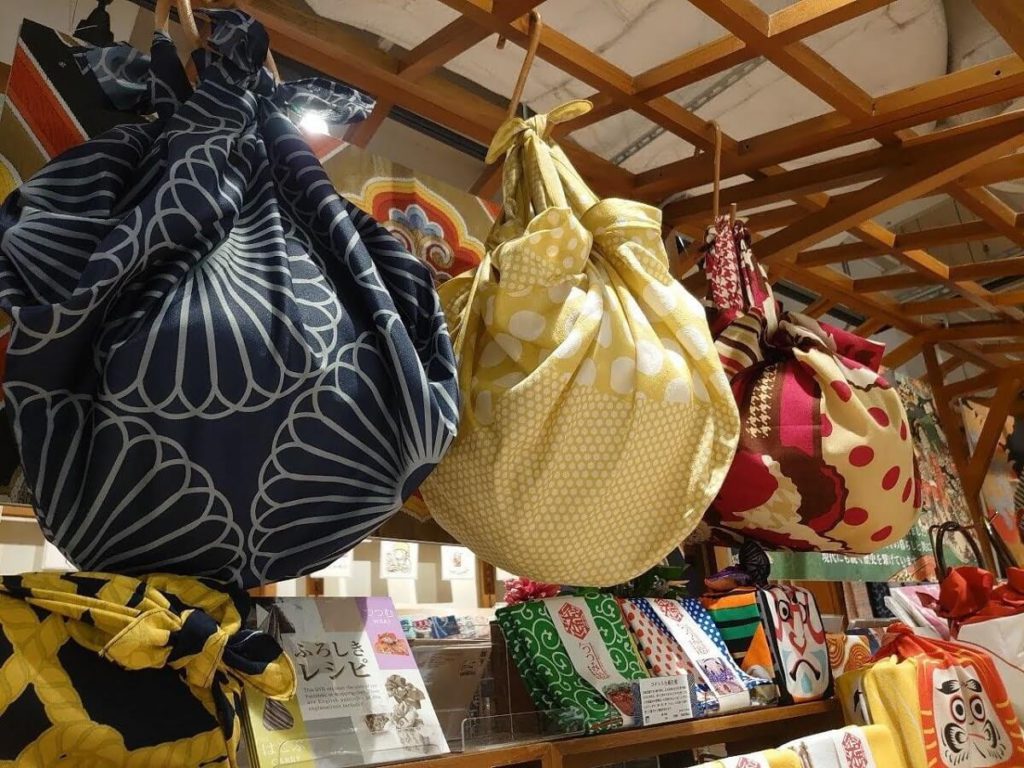
Now, let’s talk about gifts wrapped in furoshiki. Traditionally in Japan, It has been polite to hand-deliver a gift wrapped with furoshiki and undo the wrapping when you give a gift, at their place. It is considered impolite for the gift recipient to open it in front of the sender. And people take the furoshiki back to their house. This way of giving a gift is very different from other countries. Recentry, furoshiki are used like wrapping paper, and people often give it this way. Furoshiki is used not only for wrapping, but it’s very useful in other ways too, as a bag, a table cloth, a tapestry, a book cover, a shawl, etc. Most of all, there are surprisingly many designs, colors, materials, and various ways to use them. Furoshiki is an amazing cloth which you would really enjoy using. it’s also been re-evaluated in this eco-friendly age for not wasting wrapping materials.

One furoshiki can transform many types of bags as shown in the picture above. Making a bag depending on the situation is convenient and so fun for you. If you can buy some small metal rings at Daiso, like I did, it’s really useful to make many types of bags.
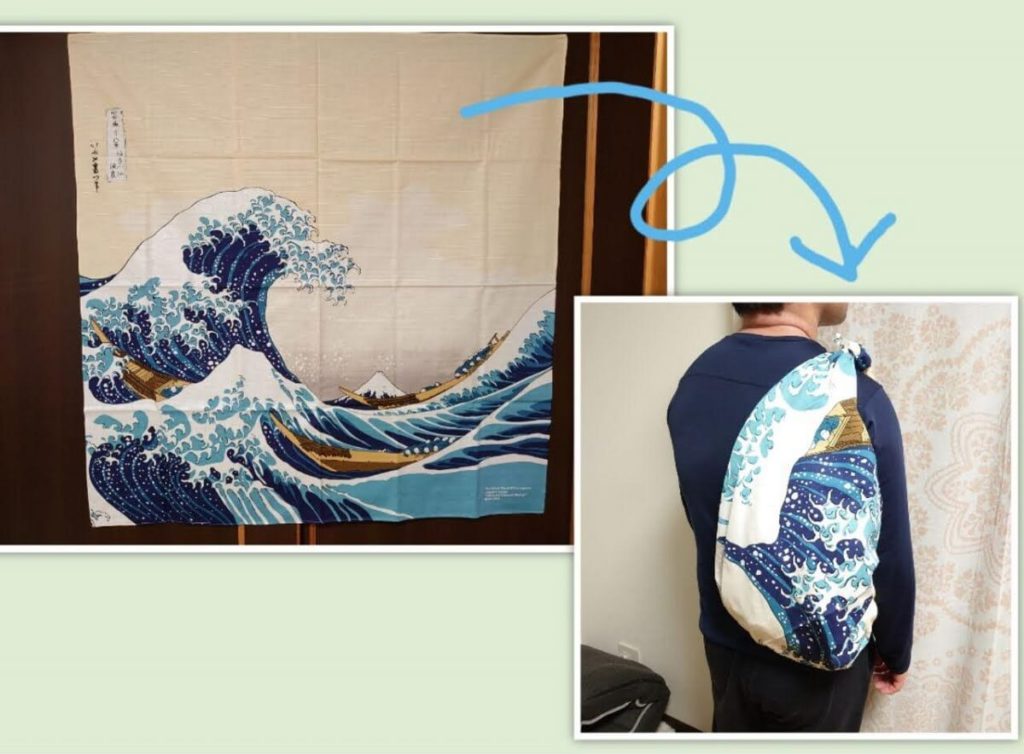
This ukiyo-e patterned furoshiki, perfect for tapestries, can also be transformed into such a wonderful bag. It’s so cool, right?
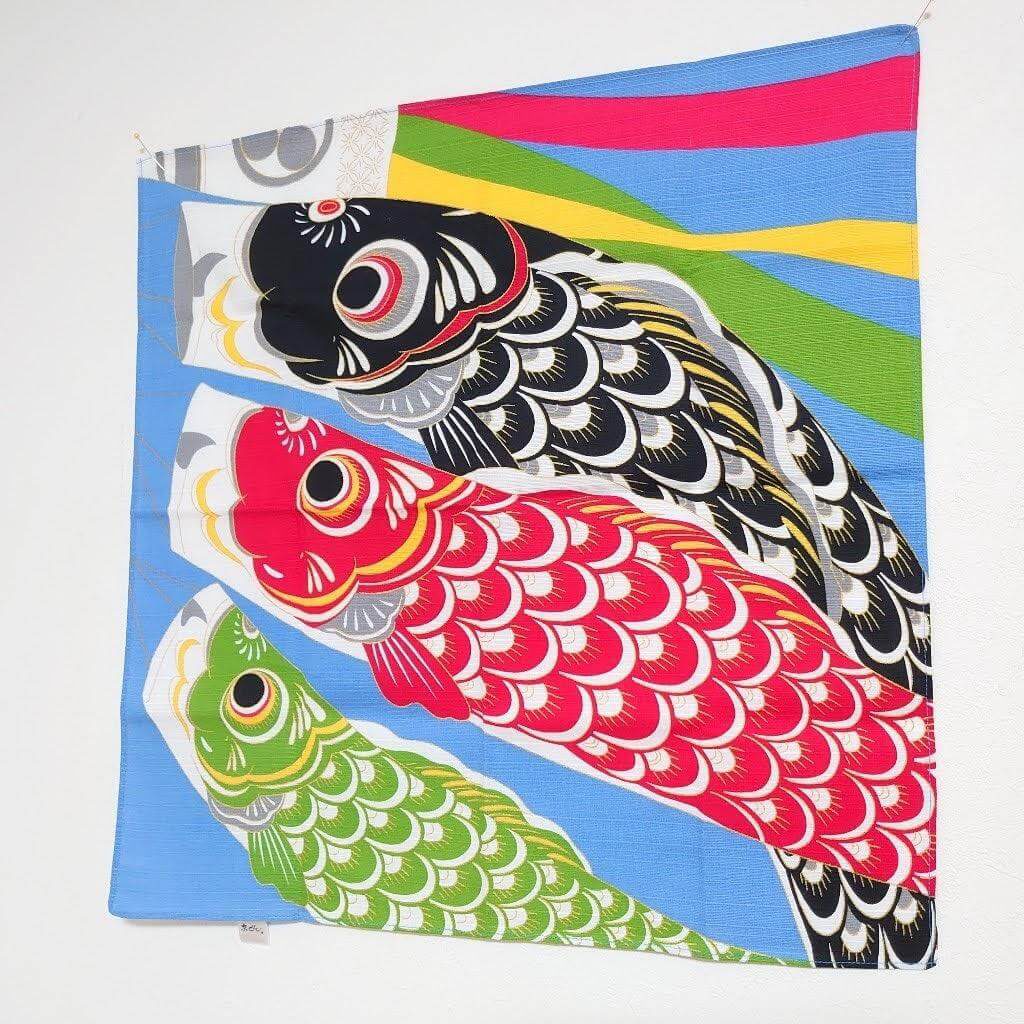
Conclusion
How do you feel after learning a little more about furoshiki so far? Furoshiki can be stored easily, are very light and can wrap many different kinds of shapes. Selecting the color, size, and design of furoshiki of your choice is one of the pleasures of using it. I also love tenugui, which are Japanese towels, as I shared before in another HTJ article, a very similar item to furoshiki.
Both of them are just flat cloths, but they were birthed with a lot of wisdom by past people. How will you use it? For what will you use it? The use of furoshiki is up to you. Let’s enjoy its flexibility. I’m sure you will love it.
Get wrapped up in Japanese hand towels “Tenugui” – How To Japan
Please check these websites. You can make these wonderful bags.
Musubi Furoshiki
Otsutsumi Kenkyusyo
Thank you for spending time reading my article to the end. See you next time.
I’m a clay artist, and a master of Japanese calligraphy “Onore-sho”. I have my own shop in Ikaruga town, Nara, which is near Horyuji temple: world heritage site. And I’m a volunteer English tour guide. I enjoy learning English everyday.

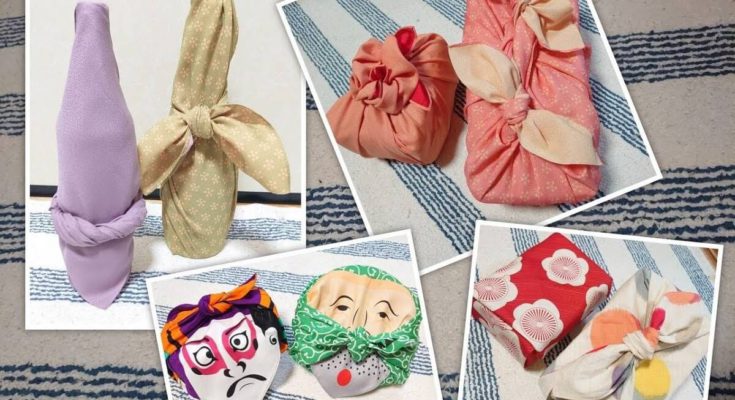
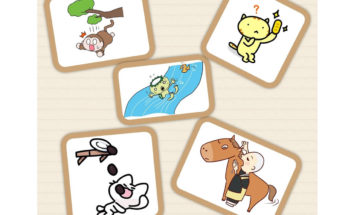

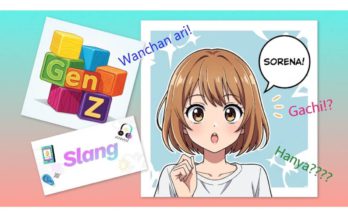
 HTJ has a YouTube page! Check it out
HTJ has a YouTube page! Check it out